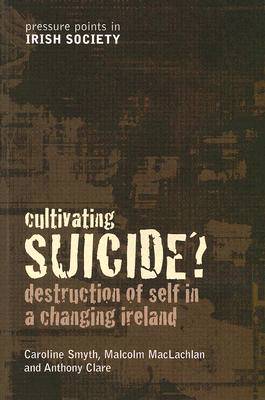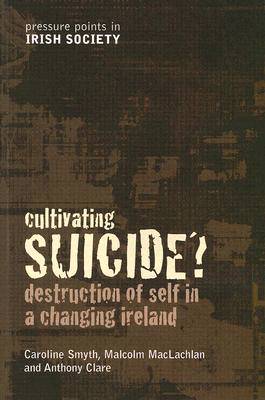
- Afhalen na 1 uur in een winkel met voorraad
- Gratis thuislevering in België vanaf € 30
- Ruim aanbod met 7 miljoen producten
- Afhalen na 1 uur in een winkel met voorraad
- Gratis thuislevering in België vanaf € 30
- Ruim aanbod met 7 miljoen producten
Zoeken
Cultivating Suicide?
Destruction of Self in a Changing Ireland
Caroline Smyth, Malcolm MacLachlan, Anthony Clare
€ 40,45
+ 80 punten
Omschrijving
Over the last decade Ireland has experienced unparalleled economic growth and has reached a state of prosperity that makes our European neighbours envious. In addition, with the introduction of divorce, the decline of the Catholic Church as an institution and the consequent decline in the practice or religious worship it may be said that Irish culture has changed at many levels. This change has come at a great cost, however, as can be seen in the dramatic increase in the Irish suicide rate, especially among young men. In this time of economic growth and prosperity, why are so many of Ireland's young people, at a significantly higher proportion than their European counterparts, taking their own lives? What is it about Irish culture which is either creating or contributing to such a sense of anomie and lack of hope? This book looks at the issue of suicide in the Irish context. It takes a specifically cultural approach - as opposed to psychological or medical - by addressing two fundamental questions: Why has there been an increase in suicide in Ireland in recent years? and What changes has Ireland seen that other countries have not, or have dealt with differently, which might explain why Ireland has a higher rate of suicide relative to those countries?Included in the authors' findings will be analyses of the changing nature of the Irish family, the dramatic societal changes in the last two decades, issues concerning masculine identity and self-worth and case studies of individuals who have considered or attempted suicide. The book concludes with a look at the current suicide prevention programmes and offers specific suggestions on how they could be strengthened.
Specificaties
Betrokkenen
- Auteur(s):
- Uitgeverij:
Inhoud
- Aantal bladzijden:
- 148
- Taal:
- Engels
- Reeks:
Eigenschappen
- Productcode (EAN):
- 9781904148159
- Verschijningsdatum:
- 1/12/2003
- Uitvoering:
- Paperback
- Formaat:
- Trade paperback (VS)
- Afmetingen:
- 196 mm x 232 mm
- Gewicht:
- 263 g

Alleen bij Standaard Boekhandel
+ 80 punten op je klantenkaart van Standaard Boekhandel
Beoordelingen
We publiceren alleen reviews die voldoen aan de voorwaarden voor reviews. Bekijk onze voorwaarden voor reviews.








